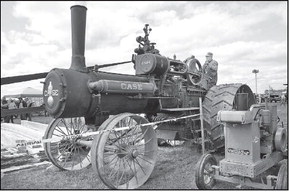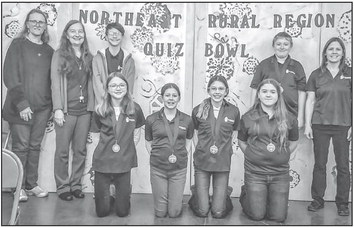Editor should learn to trust the process, see big picture
LETTER TO THE EDITOR
To the Editor: In the Oct. 28 edition of the Tribune-Phonograph,
an editorial written by Peter Weinschenk was more than likely overlooked by your readers. In a column entitled “Scrap the Plan,” Weinschenk divulged a bleak outlook on a 10 year land and water resource plan, calling it a “dismal reality.”
“The plan is a fraud...the proposal won’t help the environment...sadly stuck in old, unproductive thinking that has proven ineffective on the landscape.”
Politely we would ask you, Peter, do you know what you are talking about? You are entitled to your opinion; however, you are not entitled to create your own truths.
Upon second glance of his scathing words, it became evident that this work of ink was less about accuracy and more about picking a fight. Peter, we sat on the technical advisory team for this plan, and as you know, we serve on the advisory panel for the Eau Pleine Partnership for Integrated Conservation (EPPIC), which inspires innovative conservation in Marathon County.
The way this plan is written is to set goals for us to hit through education and outreach, and to avoid regulation and imposing restrictions when possible. We did it that way to maximize state and federal funding to target change instead of “scattergun” shooting new ordinances or new fines.
In Matt’s time at the capital during the first hearings for the Water Quality Task Force, he heard straight from the mouths of assembly representatives and senators that “scattergun legislation” and pouring money into ordinances is wholly ineffective. That is probably why the Assembly Agriculture Committee didn’t bother returning your phone call. Farmers aren’t stupid, they want to learn how these practices can work or how they can elevate the profit and productivity of their acres with less inputs and in a more sustainable way. But you don’t get there without proper avenues of expertise, outreach, and data, which are the overarching goals of this plan.
Peter, we can agree with you that soil losses from cropland need to improve at a faster rate than they have been. But you misstated something: soil loss and runoff of phosphorus are clearly identified in the plan as major resource concerns.
So why the continuing soil loss, you ask? Cropland soil erosion rates are increasing because of an increase in erodible cropping systems (cash crops like corn, soybeans). No-tilling won’t stop it just like carbon credit programs won’t stop it, but you know what will? Adaptive crop rotations, continuous cover, perennial systems, and incentives for the pursuit of new markets will all play a part in reducing the amount of exposed soil, and are all clearly stated in the plan that you have criticized.
In perspective, the big picture right now shows we have not come near reaching our goals, but in a short amount of time have made progress toward improving our landscape economically and environmentally.
Recent surveys prove our point. Comparing 1999 to 2020, we have seen conventional tillage (plowing) decrease by 25 percent while no-till has increased by 7 percent. Since 2018, acres under minimal tillage systems and cover cropping have increased by 10 percent. On our EPPIC survey of just 30 farmers, we identified over 9,000 acres of cover crops, nearly 15,000 acres of no-till, over 5,000 acres of low-disturbance manure incorporation and a whopping 1,500 acres of managed grazing. All of this is being done without the issuing of one citation — a damning declaration.
The plan is designed to have basic performance standards for farmers, and for the most part, they are supportive of it because, with each passing season, it becomes increasingly evident that there are only a few bad actors giving the rest of farmers a bad name. It focuses on soil health and community engagement and considers what it will take to move good farmers to great farmers. This will benefi t not only our precious resources but also the community, farmers and lifestyle.
Wasn’t that your whole point in the first place, Peter? It seems that you majorly missed the context of what this plan is building toward and capitalizing on. If your frustration is the seemingly slow speed at which this is happening, we can understand. But we ask you to understand that we are doing our best to cooperate with state and local agencies, something that is unavoidable. We also ask you to trust the process and to attempt to see the big picture that this plan represents.
Jason Cavadini Matt Oehmichen


